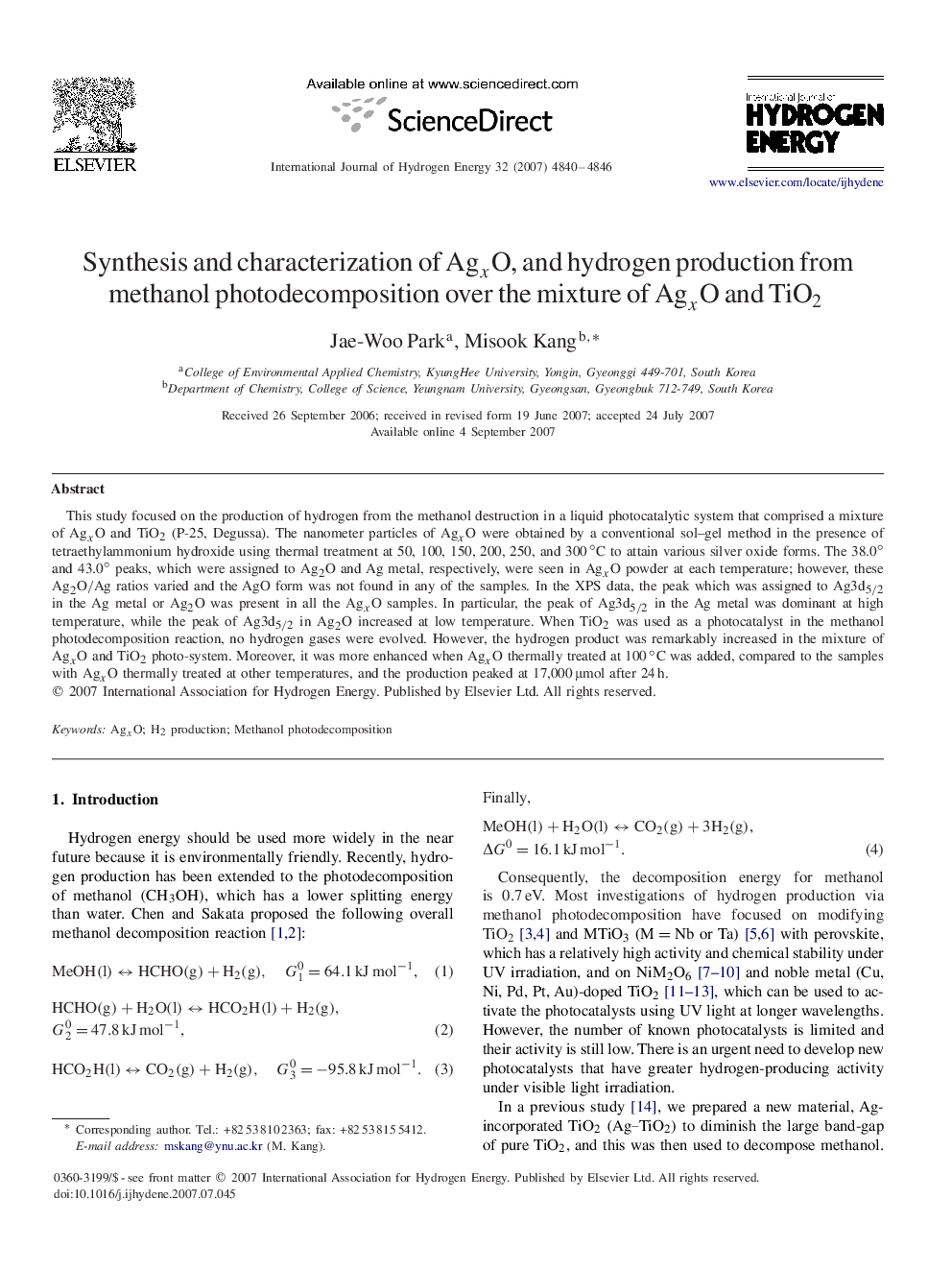| Article ID | Journal | Published Year | Pages | File Type |
|---|---|---|---|---|
| 1283773 | International Journal of Hydrogen Energy | 2007 | 7 Pages |
This study focused on the production of hydrogen from the methanol destruction in a liquid photocatalytic system that comprised a mixture of AgxOAgxO and TiO2TiO2 (P-25, Degussa). The nanometer particles of AgxOAgxO were obtained by a conventional sol–gel method in the presence of tetraethylammonium hydroxide using thermal treatment at 50, 100, 150, 200, 250, and 300∘C to attain various silver oxide forms. The 38.0∘38.0∘ and 43.0∘43.0∘ peaks, which were assigned to Ag2OAg2O and Ag metal, respectively, were seen in AgxOAgxO powder at each temperature; however, these Ag2O/AgAg2O/Ag ratios varied and the AgO form was not found in any of the samples. In the XPS data, the peak which was assigned to Ag3d5/2Ag3d5/2 in the Ag metal or Ag2OAg2O was present in all the AgxOAgxO samples. In particular, the peak of Ag3d5/2Ag3d5/2 in the Ag metal was dominant at high temperature, while the peak of Ag3d5/2Ag3d5/2 in Ag2OAg2O increased at low temperature. When TiO2TiO2 was used as a photocatalyst in the methanol photodecomposition reaction, no hydrogen gases were evolved. However, the hydrogen product was remarkably increased in the mixture of AgxOAgxO and TiO2TiO2 photo-system. Moreover, it was more enhanced when AgxOAgxO thermally treated at 100∘C was added, compared to the samples with AgxOAgxO thermally treated at other temperatures, and the production peaked at 17,000 μmol after 24 h.
